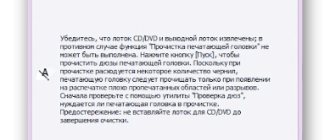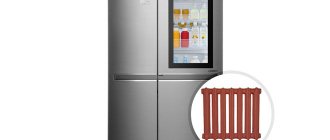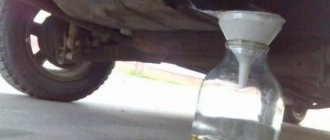Do I need to rinse the inside?
The local heating system is installed mainly in private buildings that are located outside the city. The owner of the house himself updates the contents of the boiler. Batteries last longer because only fresh heating fluid circulates. They also need cleaning, but this is more of a preventative procedure. The general meeting is held less frequently, for example, once every 5 years.
Employees of the central heating organization update the contents of the line much less often. Most often, the oily substance is diluted with a new one, refreshing it. The volumes are not enough to update everything frequently. Thus, over decades, the liquid circulating through the radiators of high-rise buildings differs in composition from its original state.
Radiators gradually begin to give off heat worse. Insoluble elements or reaction products of the material with impurities of the circulating substance accumulate on the walls. Eventually, a blockage occurs, which leads to disastrous and costly consequences.
Regular preventive maintenance of the heat exchanger will help avoid troubles. You won’t have to worry about the fact that you will soon have to update your expensive heating system due to its failure.
To figure out how to clean any heating radiator yourself, you first need to know the nuances of the structure of modern radiator models.
Important: the main thing in such a situation is compliance with safety precautions. Having a product damaged during care is not the worst thing that can happen. It should be remembered that there is almost always liquid inside the battery.
Features of radiators
In new or old Khrushchev-type apartments, cast iron batteries, so-called accordions, are installed predominantly. They are famous for their long service life and remain warm for some time after the hot liquid has ceased to be renewed. Cast iron withstands pressure drops in the system and poor-quality contents more easily. But such radiators are also more expensive.
Products made from bimetallic material are cheaper, thinner, and lighter. They are distinguished by increased heat transfer, but also cool quickly. They are easier to clean from the outside and look more attractive from an aesthetic point of view.
They don’t clog as often because they are made of a smoother material to which less dirt sticks. But bimetallic batteries more often burst, unable to withstand a sudden surge in pressure in the system. This is not uncommon at the beginning of the heating season or during sudden temperature changes. Therefore, they are preferred to be used in private homes or commercial buildings.
Aluminum products are the cheapest, but they are fragile and short-lived. Apartments with old heating systems quickly lose their functionality.
During the maintenance process, each type of battery must be considered individually.
Reasons and need for cleaning
Why is it necessary to make efforts to clean heating devices? Like any objects in a residential area, heating radiators become dirty, not only from the outside, but also from the inside. Dust accumulates on the surface of appliances, which can negatively affect the well-being of residents. In addition to dust, such devices often have greasy contaminants that are difficult to remove.
It is necessary to thoroughly rinse heating batteries if:
- the battery heats up unevenly - one part differs in temperature from the other even to the touch;
- the apartment warm-up time has increased compared to previous seasons;
- radiators are cooler than the thermal mains;
- For residents of private houses, a characteristic sign of the need for flushing is the fact of an increase in energy resources for heating, provided that heat transfer is reduced or maintained at the same level.
Contamination of heating batteries occurs due to changes in the quality of the liquid. This fact contributes to the settling of mechanical particles moving together with the coolant. After the end of the season, the water is drained, and corrosion often begins to develop inside the pipe. When the heating season resumes, under the pressure of hot water, corrosive particles begin to move and settle in the radiator. Over time, debris builds up, which can lead to blockages and poor performance. Thus, lack of cleaning can lead to a decrease in the heat output of the batteries while maintaining the same costs.
Classification
Radiator cleaning procedures are divided into different types, depending on the auxiliary means used and the area of influence.
There are significantly more options, but only those that can be done independently and at home without the use of specific equipment will be covered.
Outdoor
It is used to refresh the appearance of the product, remove accumulated dust, dirt and renew the top protective layer of paint. In turn, it happens:
- Chemical - requires the use of active substances that enhance the effectiveness of cleaning with a damp sponge or microfiber cloth.
- Mechanical - used to remove the outer coating for the purpose of updating it. The following tools are used: grinder, brush, sandpaper, etc. Using additional means, you should pay special attention to the joints of the sections and the line with the battery, so as not to damage them.
- Thermal - also used to remove a layer of paint from a cast iron battery. An industrial hair dryer or blowtorch does the job faster, but it also affects the rubber sealing gaskets between the segments. If you do not want to disassemble the battery into sections, it is better to abandon this method.
Internal
Responsible for the quality of heat transfer from the radiator and its throughput.
- The mechanical method requires the use of a brush or wire with a hook, with the help of which the limestone build-up is cleaned or chipped off. In this case, specialists use a blowing station. Then the product is washed with water from the inside and mounted in its original place.
- Chemical is often performed after mechanical to enhance the effectiveness of the latter, but it can also be an independent procedure. It requires the mandatory use of an active substance that will dissolve or weaken the structure of deposits inside the product.
Important: in some cases, dry cleaning will not give the expected result, because under the influence of temperature, a conglomerate is formed that cannot be washed off with anything. The only solution is to buy a new heat exchanger.
We use a steam generator
A steam generator will be a more modern alternative to a hairdryer and a rag. This equipment is ideal for cleaning old type radiators with many small cells. This universal device copes with any type of contaminant, while helping to disinfect radiators from the inside.
Before using the steam generator, it is necessary to place cloths under the battery to absorb water and moisture. If walls and floors need more reliable protection, then it is worth covering them with polyethylene or construction film. All that remains is to use the steam generator not exactly for its intended purpose, but according to the standard scheme!
Preparing for washing
Do not be mistaken that this is easy to do, especially when it comes to cast iron. But if you approach the situation wisely and your hands “grow from where they should”, two men will cope with the task.
Preparation technology:
- It is better to choose a day before mid-autumn, when services have already purged the main line, but water has not yet been released into the system. Ideally, you need to clean the batteries of all neighbors in the riser at the same time. Otherwise, dirt in a radiator located in another apartment will end up in yours, and the procedure will become useless.
- Draining water from the system in a private home is not difficult and can be done at any time. In an apartment building, you will have to negotiate with a plumber to carry out all the manipulations in the basement, where the distribution center of the house is located. You need to notify your neighbors if this happens during the heating season. Although the latter is resorted to when there is a blockage. It is better to carry out routine cleaning of radiators in the summer.
- If you have only superficial knowledge about the operation of batteries, their connection to the system and other nuances, it is better to first study the hardware. Or call a professional.
- Prepare a container in advance where the remaining liquid will drain.
- After unscrewing the element, you need to remove it. At this stage you will need an assistant. Even a bimetallic product is inconvenient to dismantle alone.
- The coolant should be inspected. Maybe there is no point in cleaning it anymore.
- If you plan to wash the product with water in the bath, you need to put something under it. For example. silicone mat. Otherwise, the scratches on the tank will be so serious that you will then have to pay for the restoration of the bathtub.
Tip: If the joints are welded, you need to use a cutter or other tool to heat the coupling.
Features of cleaning during the heating season
Under certain circumstances, the procedure can be performed in winter. In this case, you need to pay attention to the following points:
- the cleaning method and special product used are similar;
- flushing in a local system eliminates the need to disconnect and remove all thermal elements;
- before the procedure, you need to notify the housing and communal services plumber that he is servicing the house;
- When dismantling, hot oily liquid will pour out of the battery, and not cold residual water. And there will be a lot of it.
Specifics of cleaning in a private home
A number of features of caring for a local heating system:
- The coolant is most often water, and it is not always filtered. Dirt, circulating through the pipes, gets stuck in each element.
- Not only the radiator, but the entire line needs to be purged or flushed, otherwise the procedure loses its meaning.
- Shutting off one coolant during the heating season is carried out only if there is a leak or similar problems.
Features of radiators in Khrushchev buildings
Older houses have a single pipe system. The coolant is supplied from the bottom up, and then goes through the return line to the outlet main, which is located in the basement. In this regard, on the lower floors in neighboring apartments there may be different rates of heat transfer from radiators. Cleaning or replacing the battery with a new one will help solve the problem if the old one is very worn out and clogged.
The disadvantage of single-pipe systems is rapid wear and clogging of risers, radiators and mains. If you make a cut into a 20-year-old cast-iron battery, which has served since the day it was installed in a Khrushchev apartment, you can see a limescale build-up that reduces the passable diameter by almost half. It also reduces the heat transfer of the element. To find out how to wash the battery in a Khrushchev-era apartment, it is better to consult a plumber.
How to clean a radiator yourself
Before dismantling work, you need to drain all the liquid from the line. Therefore, it is not recommended to do this in winter, since there is more water and, accordingly, no less hassle.
If the procedure is not preventive, it should be cleaned with a special agent. It can be prepared from scrap materials or purchased.
Important: if you need to wash out the contents of a cast iron radiator, you must remove all plugs.
Sequence of actions for the apartment option:
- The first rinse is pouring hot water. It should not be boiling water, because it contains a large amount of insoluble salts, which will again stick to the walls of the product. Seal the outlets and shake the battery well. Drain everything.
- The second wash is a control wash with an additional substance. It is better to prepare the solution in advance. When using a chemical, its quantity is regulated by the manufacturer, which is indicated in detail on the packaging. For each home-prepared drug based on a folk recipe, a separate individual measure is indicated.
- After pouring liquid into the heat exchanger, you need to plug all the holes again and leave the product in this position for several hours.
- Returning to the radiator, shake it to remove layers of limescale and other dirt that have softened under the influence of the active substance.
- Remove the plugs and allow the contents to flow out.
- Pour clean warm water several times to wash off any remaining reagent.
Advice: you should remember that when cleaning the element in the bathroom, you will then need to remove everything that has leaked from the radiator from the container.
If you ignore the last procedure and do not remove the remaining foreign substances, in the future this may cause deformation or destruction of the material from which the product is made.
Long brush with curved brush
Sometimes it’s worth spending money on comfortable cleaning and buying a special brush-brush for cleaning hard-to-reach places. This brush with a curved ring penetrates perfectly into the battery, eliminating any kind of contamination. The peculiarity of its use is that you can reach those places where your hand could not previously reach. In a store of various household items for the home, such a device may be called a bottle brush.
When choosing the most convenient and affordable method for yourself, you need to remember that the dirt and dust that accumulates in the radiator cells is harmful to the health of households and pets, and can cause allergies and other diseases. That is why you should not bypass such hard-to-reach areas.
Means for chemical cleaning inside: table
| Substance | Application |
| Vinegar essence (concentrate, not table 9% analogue) |
|
| Soda Ash or Caustic Soda |
|
| Citric acid (recommended for local systems) |
|
| Car radiator cleaner (not for use with aluminum or bimetallic batteries) | Proceed according to the instructions on the package. |
Important: chemicals that attack rust and limestone can cause leaks. For example, alkalis are milder than acids.
How to clean the outside
A good housewife makes sure that everything in her house is perfect, including the radiators of the heating system. To eliminate the need to frequently wipe dust in hard-to-reach places between segments, the batteries are covered with special screen boxes. If there is no such design, you will have to arm yourself with improvised means.
Dry cleaning
The procedure consists of using auxiliary tools that are found in every home:
- Vacuum cleaner. Thinking about how to wash the accordion battery inside, between the segments, nothing comes to mind except the ubiquitous vacuum cleaner. A reliable assistant will cope with dust deposits, and special small nozzles will make the process quick and comfortable.
- A hair dryer is a hair device that can blow out everything from the battery bins that have accumulated over the years. It should be mentioned that dust settled nearby will have to be removed with a vacuum cleaner.
- Pipidastra - a fluffy broom with cheerful colors is designed for brushing away dust from fragile things that cannot be wiped or this is due to a long, painstaking process due to the complexity of the shape. It will also help in the fight against dry dirt in the radiator.
Wet cleaning
- The sponge is used with water or detergent auxiliaries. You will have to try hard to reach hard-to-reach places of a complex-shaped product made of cast iron or other alloy.
- The brush is suitable for multi-row battery devices, such as bimetallic ones. In the gaps between the plates, a thin brush will easily go through and shake off the dust.
- A brush is convenient for cleaning holes, and to avoid splashes, just wrap the tool in a cloth.
- A microfiber or cotton cloth can also be used with water or liquid detergents.
- A kettle with boiling water will help rinse the entire product in the shortest possible time. You just need to place a tray under the battery to catch the draining liquid.
- A steam generator is a modern attribute that not every home has, but is a useful multifunctional assistant in everyday life. It will not only clean, but also remove all pathogens from the surface. The floor and wall behind the battery must first be covered with film and cloth. Textiles will absorb moisture that gets on it, and polyethylene will not damage the wallpaper or flooring.
Chemical and folk remedies that can be used to wash stubborn stains on the battery:
- vinegar;
- oxygen bleaches;
- liquid or dry substances marked “Anti-grease”;
- washing powder;
- a strong solution of laundry soap;
- baking soda paste;
- diluted chalk;
- citric acid - 3 tsp. for 200 ml of water;
- peroxide.
This is interesting: 9% table vinegar even fights mold, which is important in areas with a humid climate. It helps to wash away old dirt.
Cleaning methods
At the moment, there are several methods by which you can clean cast iron batteries from contaminants. Some craftsmen do all the work at home, while others prefer to turn to heating network workers for help.
We recommend: How to clean chimneys in a stove using folk remedies: how to clean a chimney
Each washing option has its own characteristics.
Dry cleaning
Dry cleaning involves everyday cleaning. Cleaning the outside of the battery is not difficult if you do it once a day or at least once a week.
Cleaning heating radiators from the outside:
- The vacuum cleaner comes with special attachments that can remove all the dust between sections if they are very close to each other.
- If you don't have a vacuum cleaner, you can use a hairdryer. We attach a damp cloth between the heating radiator and the wall. We direct the flow of hot air inside the sections and blow out all the accumulated dust. Thanks to the damp cloth, the dirt will not fall onto the carpet, but will stick to the rag. Then we rinse the cloth in clean water and continue cleaning other devices.
You can buy a special brush for heating radiators in the store. It will be easier for her to wipe off dirt. It is equipped with soft sponges that are very dense and allow you to clean the battery from several sides at once.
Wet cleaning
Use any detergent that can be used to clean the outside of a cast iron radiator.
Mix some liquid in a bucket of hot water, whip up foam. Dip the sponge and squeeze out excess water. Wipe the outside of the radiator, and don't forget about the piping and valves.
The wall behind the heating device can also be washed with soapy water.
Mechanical
For such cleaning, the pipes are disassembled. It effectively removes accumulated dirt, but is weakly effective against scale on the internal surfaces of the circuit. Before such flushing, close the valves before and after the boiler, then drain the water from the circuit using a drain valve. If it is not there, unscrew the cap on the radiator, which is located lower and farthest in the apartment. For greater efficiency, after draining the water, the batteries are dismantled.
To disassemble the radiator, use wrenches of the required size, including pipe wrenches. To do this, loosen the union nuts that connect the radiator to the pipes. The radiator is taken outside or into the bathtub, first covering it with thick textiles that protect it from mechanical damage. After washing, the textiles are discarded. The drain in the bathtub is covered with a mesh to prevent clogging of the sewer.
They clean the radiator with a cable and use it to clean the pipes. You can remove the primary dirt into a previously prepared container to reduce the load on the sewage system. For greater efficiency, before flushing, you can disassemble the radiator into sections of 2-3. After cleaning, the battery is washed by directing a stream of water into the internal circuit. To do this, use a hose with an adapter, ensuring the tightness of the hose connection. Stop washing when the outlet water becomes clear.
Dispersed
Biological flushing is an improved modification of the chemical method for removing clogged radiators. However, the action of the reagent here is somewhat different from the original method. The diluted reagent entering the system does not destroy the structure of metal radiators: its action is aimed at molecular rupture of the compounds of metal and compressed dirt. This method is applicable to batteries made of different materials, which is convenient and does not cause leakage.
The solutions used are not harmful to humans, so there are no problems with the disposal of waste material. During the washing process, dirt comes out of the batteries in a split form, so its pieces do not clog the radiator and pipe passages. After treatment, a special hydrophobic film is formed on the surface, which prevents the formation of new limescale deposits inside the circuit.
The process is carried out as follows:
- calculate the amount of reagent based on the characteristics of heating systems;
- prepare the device as in the chemical method;
- the device is connected to the system, the pump is turned on, liquid is introduced into the system circuit;
- after the required time, the waste material is drained into the sewer;
- flush the system with water several times;
- the system is filled with clean water.
When performing flushing during the heating season, you need to connect a device that closes the heating system.
Hydrodynamic
This technique involves supplying thin jets of water under high pressure to the heating system. Special nozzles are used for it. Water will not be supplied from a tap using a hose, but through a pump under pressure. Using this method, it is possible to stop the supply hose in particularly problematic areas where flushing is required. The method is considered environmentally friendly and effective for cast iron radiators.
However, it is not so easy to do it at home, because equipment that can provide water pressure of several hundred atmospheres is not cheap. In addition, such washing requires experience, which may require calling a specialist. Another disadvantage is the fact that the deposits must first be softened with a special solution, which is different for each battery material.
Hydropneumatic
This method involves flushing the heating system by supplying high pressure air inside the circuit. It is carried out through the inlet or outlet of one of the radiators, using a compressor, which is connected through a check valve. This connection prevents water from entering the system. The compressor supplies steam, creating a turbulent flow with high energy. This causes the build-up of compressed rust inside the circuit to be torn off and washed out of the system.
To flush radiators in this way, turn off the water. After this, a compressor with a pneumatic gun is connected to the radiator. When the batteries are not dismantled, the cap on the farthest one is unscrewed and a hose is connected through an adapter, which will collect debris. He is taken to the toilet. The first air supply, which is a short-term pulse, is carried out in the direction opposite to the circulation flow of the system.
Re-injection is performed by changing the direction of the air. To do this, the supply and collection hoses are swapped. To make the method more effective, you can dismantle the radiator, although this is more troublesome. The batteries can be taken outside, where it will be easier to wash them. After washing, they are put in place, then the circuit is connected to the coolant and the system is started to wash out any remaining dirt.
Then turn off the water supply, remove the drain hose, and put the plug in place. Now the system can be put into operation. The method is based on shock waves, of which a total of 2 to 5 may be needed. This flushing method does not take more than a few minutes if the radiators are not removed. It does not depend on electricity, since the installation operates autonomously. Its disadvantage is the limited range of action, which depends on the technical characteristics of the air gun used.
Electrohydropulse
This cleaning is carried out using electric discharge energy, which destroys scale and salts deposited inside the circuit. However, the batteries and pipes are not damaged. This method requires special equipment, although its efficiency is high, and the process itself does not require disassembling the heating system. The shock wave will destroy existing scale. And after the process, all that remains is to rinse the system with clean water to get rid of deposits that have lagged behind the walls.
This method is an alternative to replacing batteries. It is based on the application of an electrical charge in water and does not require a large amount of energy. After using a special installation, the heat exchange surfaces are completely cleaned of silt and lime deposits, which increases the internal cross-section of the circuit to the factory size. In this case, you can clean radiators and pipes of any configuration. A coaxial cable with special equipment at the end is placed into the pipe. During operation, periodic electrical discharges are created, which creates powerful waves and hydrodynamic flows, due to which effective cleansing occurs.
We recommend: Copper pipes for heating: price, features, advantages and disadvantages, popular manufacturers
Chemical
If you wish, you can clear communications yourself. But this is quite labor-intensive work, the complexity of which is determined, first of all, by the weight of the heating equipment.
During work using the chemical cleaning method, there is no need to violate the integrity of the system - disassemble the batteries into sections. It is most suitable when communications are installed in an autonomous heating system, that is, a private house, cottage or apartment.
The cleaning of cast iron heating radiators itself is carried out using chemical elements - reagents that are sold in many stores. If desired, improvised means can be used, for example, soda ash or caustic soda.
Cast iron radiators can also be washed with composite solutions, alkalis, organic and mineral acids in small proportions. Each container of chemicals has clear instructions to follow during cleaning. The fact is that these elements, with which batteries are cleaned, are aggressive substances. They affect not only scale and deposits, but also the material from which the radiator is made.
To extend the service life of the equipment, it is enough to clean it once every 3-4 years.
Often, when washing on their own, users make a serious mistake - they prepare an acid solution that is too concentrated. A large concentration of the washing solution will easily “eat up” the contaminants, and with them the sealing elements of the device. This may cause the batteries to leak. Chemical liquids should under no circumstances be used to clean aluminum radiators, unless it is a specially designed preparation.
If you lack skills, it is not recommended to carry out the work yourself, otherwise there is a possibility of permanently damaging the equipment. It is best to turn to specialists who have everything you need.
If you still want to do the cleaning yourself, it is not recommended to use too strong substances.
The best options are the salt of ethylenediaminetetraacetic acid or a more gentle option in the form of citric acid.
Hydrogen peroxide
A good helper in the household is 3% hydrogen peroxide. This well-known substance perfectly cleans and disinfects batteries. To use, add ¾ of a bottle to 2-3 liters of water. To remove severe stains, you can use pure peroxide by applying the substance directly to the stained area or with a sponge.
Lemon acid
Using citric acid, you can not only effectively clean the radiator from contamination, but also get rid of the unpleasant odor. As a rule, the smell appears from stagnant water and flower fertilizer that has reached the surface of the radiator. To prepare a cleaning solution, you will need to dissolve 3 tsp in a glass of water. citric acid.
Baking soda
Regular baking soda is suitable for cleaning the battery. To do this, dissolve 2 tbsp in 3 liters of water. l. soda For greater effect, you can add 1 tsp. apple cider vinegar and 7 drops of any liquid soap.
Vinegar 9%
Vinegar is poured into a spray bottle for further spraying onto the stained area, previously cleaned with a damp cloth. Afterwards, the battery must be thoroughly rinsed with water and wiped. Vinegar essence mixed with water in a ratio of 1:10 can also be used. When spraying in the room, the windows should be open; it is better to protect the respiratory tract with a mask.
Use of special compounds
Effortlessly, in just a few minutes, special cleaning products will help remove dirt and grease stains. To remove greasy stains, you can use dishwashing detergents, for example, Fairy, Pemolux, MYTH. Before use, it is necessary to dilute the concentrate in water, foam it and wipe the surfaces of the radiator with a brush or sponge. Light stains can be removed with laundry soap. Complex contaminants can be removed using special household chemicals intended for plumbing fixtures and household appliances, for example, Domestos, Krot, Tiret. Old stains are removed using stain removers, for example, “Vanish” and “Antipyatin”.
Using special equipment
At the moment, there are several types of special equipment used for cleaning batteries.
For domestic purposes this is the following equipment:
- pneumatic pistol "Typhoon";
- device for electrohydropulse influence ZEVS-24;
- Krot-Mini device.
Typhoon
The air gun is a compact and easy-to-use device. Thanks to its targeted effect on blockages, it can clean water and sewer pipes with a diameter of no more than 150 mm.
The essence of cleaning is a hydraulic ram, which, moving at a speed of 1.5 km/h, removes hardened deposits from the walls of the equipment. The maximum distance of the shock wave reaches 60 meters. The use of a pneumatic gun is important if conventional hydraulic flushing does not produce results.
ZEUS-24
Despite its small size, this equipment is powerful enough to destroy hardened deposits firmly stuck to the inner walls of pipes. It can be used to clean products with a diameter of seven to 150 mm.
The working principle is as follows: the device creates an electrical discharge, resulting in a shock wave and powerful hydrodynamic flows. The ZEUS-24 installation allows you to clean hard-to-reach bent and spiral pipes.
Mole Mini
This installation cleans communications with a diameter of 20 to 150 mm - intra-house sewer networks and other pipelines. Thanks to the spiral installed in the drum, cleaning hard-to-reach places is easier.
The device is used in many sectors of human activity: from housing and communal services, hotels, gas stations to industrial enterprises.
Electrical appliances
Thorough cleaning of the battery can be done using electrical appliances. It is important to take precautions.
Vacuum cleaner
You can use a vacuum cleaner for cleaning. It is advisable to use a narrow nozzle, this will allow you to penetrate hard-to-reach places. First you need to remove all dust and debris from the inside, then treat the outside. When finished, you can wipe the radiator with a damp cloth.
Hairdryer
To use a hair dryer, you must first place a towel or any thick cloth soaked in water under the radiator. Direct a stream of hot air onto the radiator. The dust will move from the battery to the damp cloth. Not the most effective way: dirt can remain between the sections, get into the air or walls, floor.
Washing vacuum cleaner
A good alternative to a regular vacuum cleaner. It will cope perfectly even with serious dirt. Cleaning should begin from the inside, and then proceed to the outer surface. A washing vacuum cleaner, thanks to an aqua filter, can prevent the spread of dust throughout the room.










